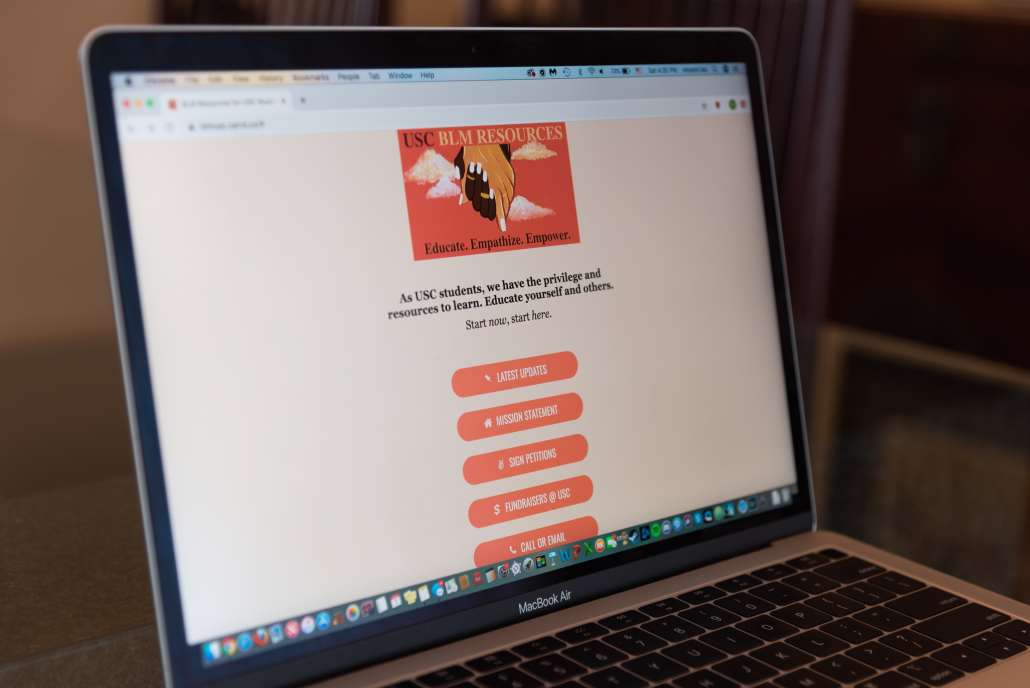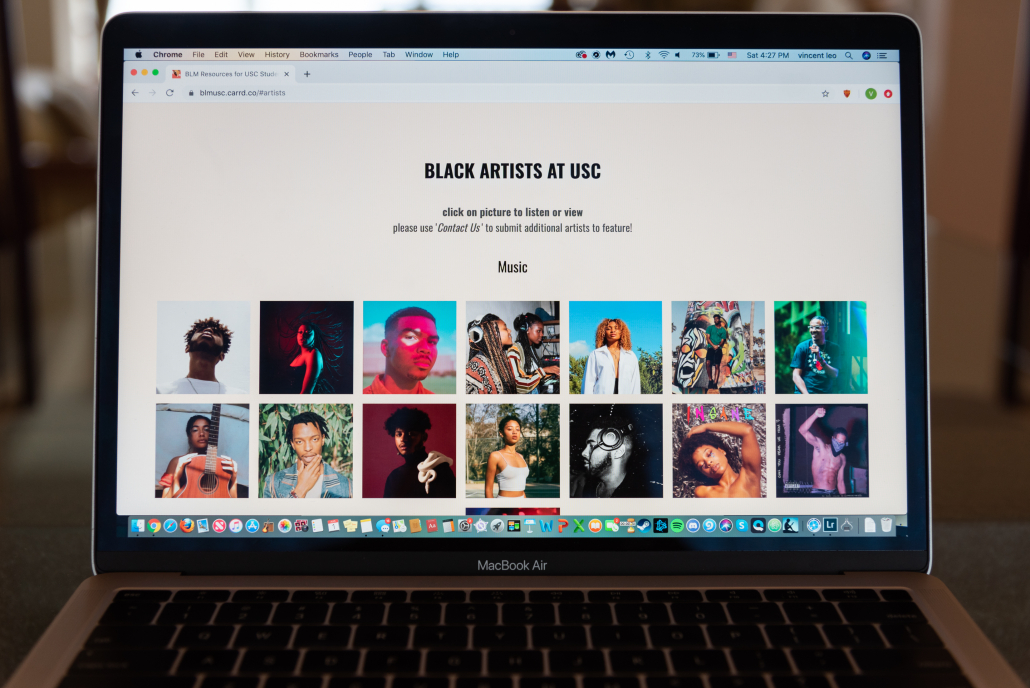‘Educate. Empathize. Empower.’ A student-led resource website to fight against anti-Blackness on campus

In the wake of incidents of anti-Black racism occurring on and off campus, Maya Desai, along with five of her peers challenged themselves to make an impact.
Starting in June, she tasked herself with several responsibilities, ranging from contacting artists on campus to writing scripts for phone calls to senators. After several virtual meetings and many hours, they created USC Black Lives Matter Resources, a website aimed at empowering Black voices through facilitating education.
The site launched July 3 in response to numerous calls to the USC administration to dismantle systems that have historically oppressed Black students, such as the Department of Public Safety, and improve Black representation on campus.
Upon reaching the site, bolded letters greet the visitor: “As USC students, we have the privilege and resources to learn. Educate yourself and others.” Below, in unbolded text, a call to action: “Start now, start here.”
Over the course of one month, the six students said they set out to research all the different ways people can educate themselves on and participate in anti-racist efforts. They compiled petitions circulating the internet that champion racial justice and assembled a list of Black-owned restaurants around campus.
While the internet has a wealth of resources to get involved and educated, Eshana Seshadri, a junior majoring in computational neuroscience, said many students feel overwhelmed and don’t know where to start. She wanted the website to be a starting point, where anyone could access a variety of resources.
“There are so many petitions going out there, fundraisers, and we thought it could be pretty useful [for the website] to serve as this hub,” Seshadri said. “We just wanted to do our part as non-Black [people of color] in helping this movement move forward.”
The mission statement outlines various demands such as the reform of the University’s general education curriculum and calls for student-run organizations to be more inclusive. However, Desai, a junior majoring in politics, philosophy and law, said these points only represent some of the public changes that the USC community is fighting for.
“Our list of demands is not holistic,” Desai said. “There are obviously a lot of things the University could do in addition to them to create effective change within our community.”
The team updates the site often with new petitions, fundraisers and educational resources that relate to the USC community, such as efforts to end campus ties with LAPD, student-led sales to support Black Lives Matter and a link to the Off the Track podcast where USC Track athletes discuss social justice.
Desai engaged with anti-racism work in other projects before she got the idea to work on the website. She first created a fundraiser for the NAACP and other organizations with her peers in Project Rishi, a student organization that focuses on fostering sustainable development in rural India, raised more than $100,000. Posts on the @black_at_usc Instagram page, which feature anonymous stories of racist incidents that Black students face, also helped her understand the power a site of curated resources could have.
“It made me realize that stuff like donations is great but we also need to tackle the end goal of educating people and highlighting the experiences of the voices that need to be heard most right now,” Desai said.
Beyond containing links to petitions and fundraisers, the website also underscores overlooked aspects involved with learning to be actively anti-racist, showcases the work of Black dancers, musicians and filmmakers on campus.

Keviette Minor, a senior majoring in design whose work focuses on her experiences as a Black woman and the feelings of rejection she has often felt, is one of many artists whose work is featured on the site.
“I was so happy that it was all kind of in one place,” Minor said. “I even got introduced to other Black students on campus that are in this town that maybe I haven’t met yet. It was really inspiring to have it.” Minor encouraged people that come to the website to make a genuine effort to have conversations with the artists and discuss their work.
These artists, Minor believes, may not find the right exposure at USC or other major platforms due to systemic issues that fail to provide appropriate Black representation.
“At an institution like USC … the experiences [of] people of color don’t really get explored in those white-walled spaces,” Minor said.
For Rohan Palla, a junior majoring in film and TV production, collaborating on the website helped him discover the connection between South Asian and Black history. Between the website’s different pages, including those such as the section “For Non-Black [People of Color] Communities,” the driving force is to create an ergonomic environment where educating oneself is not a challenging task. Palla said this goal was only possible by ensuring the team was not focusing exclusively on non-Black community’s experiences.
“We had one main goal: always put Black voices at the forefront of the website, especially as non-Black people creating this website,” Palla said. “The movement is not about non-Black [people of color].”
Desai, being of South Asian descent, stated that members within her community, particularly college students, can engage in meaningful conversations about anti-racism with friends and family members. She also believes the South Asian community has a privilege that is not afforded to the Black community.
“The culture of our communities is to not pay attention to things that are going on around us, stay in our own lane and mind our own business,” Seshadri said. “Ultimately, the solution comes down to being proactive.”

